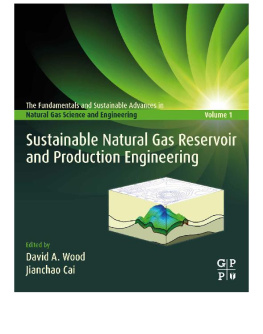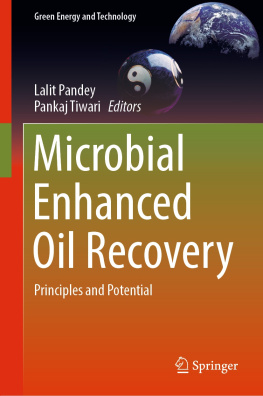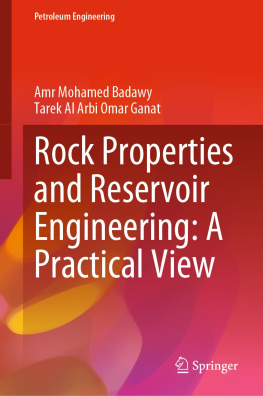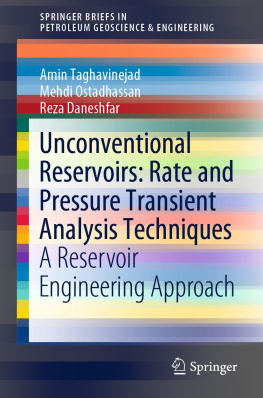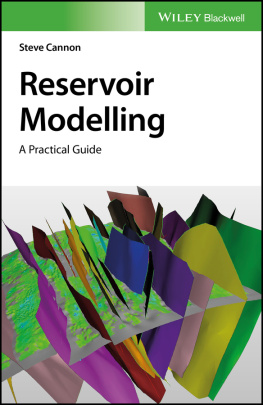About This eBook
ePUB is an open, industry-standard format for eBooks. However, support of ePUB and its many features varies across reading devices and applications. Use your device or app settings to customize the presentation to your liking. Settings that you can customize often include font, font size, single or double column, landscape or portrait mode, and figures that you can click or tap to enlarge. For additional information about the settings and features on your reading device or app, visit the device manufacturers Web site.
Many titles include programming code or configuration examples. To optimize the presentation of these elements, view the eBook in single-column, landscape mode and adjust the font size to the smallest setting. In addition to presenting code and configurations in the reflowable text format, we have included images of the code that mimic the presentation found in the print book; therefore, where the reflowable format may compromise the presentation of the code listing, you will see a Click here to view code image link. Click the link to view the print-fidelity code image. To return to the previous page viewed, click the Back button on your device or app.
APPLIED PETROLEUM RESERVOIR ENGINEERING
THIRD EDITION
Ronald E. Terry
J. Brandon Rogers

New York Boston Indianapolis San Francisco
Toronto Montreal London Munich Paris Madrid
Capetown Sydney Tokyo Singapore Mexico City
Many of the designations used by manufacturers and sellers to distinguish their products are claimed as trademarks. Where those designations appear in this book, and the publisher was aware of a trademark claim, the designations have been printed with initial capital letters or in all capitals.
The authors and publisher have taken care in the preparation of this book, but make no expressed or implied warranty of any kind and assume no responsibility for errors or omissions. No liability is assumed for incidental or consequential damages in connection with or arising out of the use of the information or programs contained herein.
For information about buying this title in bulk quantities, or for special sales opportunities (which may include electronic versions; custom cover designs; and content particular to your business, training goals, marketing focus, or branding interests), please contact our corporate sales department at or (800) 382-3419.
For government sales inquiries, please contact .
For questions about sales outside the U.S., please contact .
Visit us on the Web: informit.com/ph
Library of Congress Cataloging-in-Publication Data
Terry, Ronald E.
Applied petroleum reservoir engineering / Ronald E. Terry, J. Brandon
Rogers.Third edition.
pages cm
Original edition published: Applied petroleum reservoir engineering /
by B.C. Craft and M.F. Hawkins. 1959.
Includes bibliographical references and index.
ISBN 978-0-13-315558-7 (hardcover : alk. paper)
1. Petroleum engineering. 2. Oil reservoir engineering. I. Rogers,
J. Brandon. II. Craft, B. C. (Benjamin Cole) III. Title.
TN870.C88 2014
622'.338dc23 2014017944
Copyright 2015 Pearson Education, Inc.
All rights reserved. Printed in the United States of America. This publication is protected by copyright, and permission must be obtained from the publisher prior to any prohibited reproduction, storage in a retrieval system, or transmission in any form or by any means, electronic, mechanical, photocopying, recording, or likewise. To obtain permission to use material from this work, please submit a written request to Pearson Education, Inc., Permissions Department, One Lake Street, Upper Saddle River, New Jersey 07458, or you may fax your request to (201) 236-3290.
ISBN-13: 978-0-13-315558-7
ISBN-10: 0-13-315558-7
Text printed in the United States on recycled paper at Courier in Westford, Massachusetts.
Second printing, July 2015
Executive Editor
Bernard Goodwin
Managing Editor
John Fuller
Project Editor
Elizabeth Ryan
Copy Editor
Scribe Inc.
Indexer
Scribe Inc.
Proofreader
Scribe Inc.
Technical Reviewers
Christine Economides
Kegang Ling
Editorial Assistant
Michelle Housley
Cover Designer
Alan Clements
Compositor
Scribe Inc.
To Rebecca and JaLeen
Preface
As in the first revision, the authors have tried to retain the flavor and format of the original text. The text contains many of the field examples that made the original text and the second edition so popular.
The third edition features an introduction to key terms in reservoir engineering. This introduction has been designed to aid those without prior exposure to petroleum engineering to quickly become familiar with the concepts and vocabulary used throughout the book and in industry. In addition, a more extensive glossary and index has been included. The text has been updated to reflect modern industrial practice, with major revisions occurring in the sections regarding gas condensate reservoirs, waterflooding, and enhanced oil recovery. The history matching examples throughout the text and culminating in the final chapter have been revised, using Microsoft Excel with VBA as the primary computational tool.
The purpose of this book has been, and continues to be, to prepare engineering students and practitioners to understand and work in petroleum reservoir engineering. The book begins with an introduction to key terms and an introduction to the history of reservoir engineering. The material balance approach to reservoir engineering is covered in detail and is applied in turn to each of four types of reservoirs. The latter half of the book covers the principles of fluid flow, water influx, and advanced recovery techniques. The last chapter of the book brings together the key topics in a history matching exercise that requires matching the production of wells and predicting the future production from those wells.
In short, the book has been updated to reflect current practices and technology and is more reader friendly, with introductions to vocabulary and concepts as well as examples using Microsoft Excel with VBA as the computational tool.
Ronald E. Terry and J. Brandon Rogers
Preface to the Second Edition
Shortly after undertaking the project of revising the text Applied Petroleum Reservoir Engineering by Ben Craft and Murray Hawkins, several colleagues expressed the wish that the revision retain the flavor and format of the original text. I am happy to say that I have attempted to do just that. The text contains many of the field examples that made the original text so popular and still more have been added. The revision includes a reorganization of the material as well as updated material in several chapters.
The chapters were reorganized to follow a sequence used in a typical undergraduate course in reservoir engineering. The first chapters contain an introduction to reservoir engineering, a review of fluid properties, and a derivation of the general material balance equation. The next chapters present information on applying the material balance equation to different reservoir types. The remaining chapters contain information on fluid flow in reservoirs and methods to predict hydrocarbon recoveries as a function of time.
There were some problems in the original text with units. I have attempted to eliminate these problems by using a consistent definition of terms. For example, formation volume factor is expressed in reservoir volume/surface condition volume. A consistent set of units is used throughout the text. The units used are ones standardized by the Society of Petroleum Engineers.


